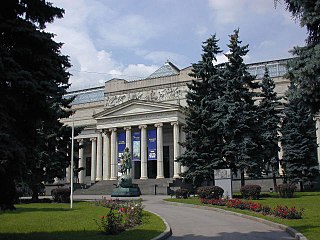
The Pushkin State Museum of Fine Arts is the largest museum of European art in Moscow. located in Volkhonka street, just opposite the Cathedral of Christ the Saviour. The International musical festival Sviatoslav Richter's December nights has been held in the Pushkin Museum since 1981.

Penn Museum, formerly known as The University of Pennsylvania Museum of Archaeology and Anthropology, is an archaeology and anthropology museum at the University of Pennsylvania. It is located on Penn's campus in the University City neighborhood of Philadelphia, at the intersection of 33rd and South Streets. It also is close enough for Drexel University students to walk or take SEPTA transportation services. Housing over 1.3 million artifacts, the museum features one of the most comprehensive collections of Middle and Near-Eastern art in the world.
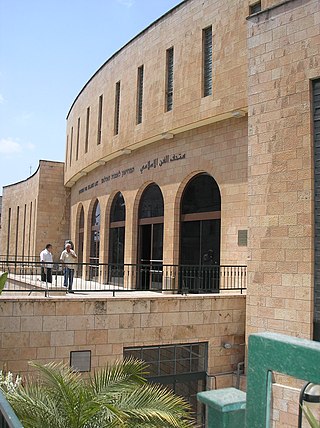
The L. A. Mayer Museum for Islamic Art is a museum in Jerusalem, established in 1974. Located on the corner of HaPalmach Street in Katamon, down the road from the Jerusalem Theater, it houses Islamic pottery, textiles, jewelry, ceremonial objects and other Islamic cultural artifacts.
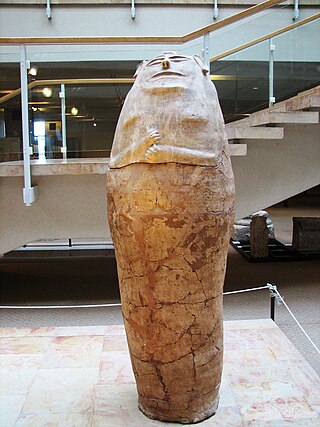
The Reuben and Edith Hecht Museum is a museum located on the grounds of the University of Haifa, Israel.

A museum is distinguished by a collection of often unique objects that forms the core of its activities for exhibitions, education, research, etc. This differentiates it from an archive or library, where the contents may be more paper-based, replaceable and less exhibition oriented, or a private collection of art formed by an individual, family or institution that may grant no public access. A museum normally has a collecting policy for new acquisitions, so only objects in certain categories and of a certain quality are accepted into the collection. The process by which an object is formally included in the collection is called accessioning and each object is given a unique accession number.

The Peabody Museum of Archaeology and Ethnology is a museum affiliated with Harvard University in Cambridge, Massachusetts, United States. Founded in 1866, the Peabody Museum is one of the oldest and largest museums focusing on anthropological material, with particular focus on the ethnography and archaeology of the Americas. The museum is caretaker to over 1.2 million objects, some 900 feet (270 m) of documents, 2,000 maps and site plans, and approximately 500,000 photographs. The museum is located at Divinity Avenue on the Harvard University campus. The museum is one of the four Harvard Museums of Science and Culture open to the public.

The Istanbul Archaeology Museums are a group of three archaeological museums located in the Eminönü quarter of Istanbul, Turkey, near Gülhane Park and Topkapı Palace. These museums house over one million objects from nearly all periods and civilizations in world history.

View from Mount Holyoke, Northampton, Massachusetts, after a Thunderstorm, commonly known as The Oxbow, is a seminal American landscape painting by Thomas Cole, founder of the Hudson River School. The 1836 painting depicts a Romantic panorama of the Connecticut River Valley just after a thunderstorm. It has been interpreted as a confrontation between wilderness and civilization.

The Allard Pierson Museum is the archaeological museum of the University of Amsterdam. It is situated at the Oude Turfmarkt 127 in Amsterdam, the Netherlands. Artifacts from the ancient civilizations of ancient Egypt, the Near East, the Greek World, Etruria, and the Roman Empire are curated and exhibited in this museum.
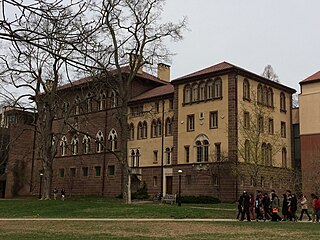
The Princeton University Art Museum (PUAM) is the Princeton University gallery of art, located in Princeton, New Jersey. With a collecting history that began in 1755, the museum was formally established in 1882, and now houses over 113,000 works of art ranging from antiquity to the contemporary period. The Princeton University Art Museum dedicates itself to supporting and enhancing the university's goals of teaching, research, and service in fields of art and culture, as well as to serving regional communities and visitors from around the world. Its collections concentrate on the Mediterranean region, Western Europe, Asia, the United States, and Latin America.

The Rollins Museum of Art is located on the Winter Park campus of Rollins College and is the only teaching museum in the greater Orlando area. The museum houses more than 5,000 objects ranging from antiquity through contemporary eras, including rare old master paintings and a comprehensive collection of prints, drawings, and photographs. The museum displays temporary exhibitions on a rotating basis along with the permanent collection.

San Martín Pajapan Monument 1 is a large Olmec basalt sculpture found on top of the San Martin Pajapan volcano, in the Tuxtla Mountains of the Mexican state of Veracruz. It is notable for its original location and its Olmec iconography.
The Yeshiva University Center for Israel Studies reflects the longstanding relationship between Yeshiva University and Israel. It supports research, conferences, publications, museum exhibitions, public programs and educational opportunities that enhance awareness and study of Israel in all of its complexities. The center is led by Director Steven Fine, Professor of Jewish History at Yeshiva University, and Associate Director Joshua Karlip, Professor of Jewish History at Yeshiva University.
Antoinette LaFarge is a new media artist and writer known for her work with mixed-reality performance and projects exploring the conjunction of visual art and fiction.
The Tucson artifacts, sometimes called the Tucson Lead Crosses, Tucson Crosses, Silverbell Road artifacts, or Silverbell artifacts, were thirty-one lead objects that Charles E. Manier and his family found in 1924 near Picture Rocks, Arizona, that were initially thought by some to be created by early Mediterranean civilizations that had crossed the Atlantic in the first century, but were later determined to be a hoax.
Fictive art is a practice that involves the production of objects, events, and entities designed to support the plausibility of a central narrative. Fictive art projects disguise their fictional essence by incorporating materials that stand as evidence for narrative factuality and thus are designed to deceive the viewer as to their ontological status. Very often, these materials take a form that carries presumptive cultural authority, such as 'historical' photographs or 'scientific' data. The key tension in fictive art projects stems from the impossibility of 'making real' a fiction, no matter how many or what kinds of objects are produced as evidence. Since fictive art projects are designed to pass at least temporarily as 'real', fictive artists may draw opprobrium as hoaxers, pranksters, forgers, or con artists when their projects are revealed as fictional.
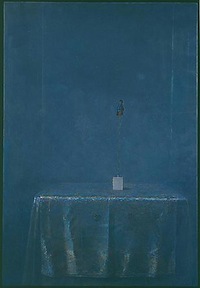
Debra Bermingham is an American artist known for her interior scenes and still lifes.
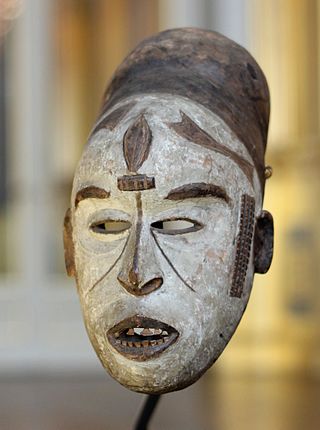
Some African objects had been collected by Europeans for centuries, and there had been industries producing some types, especially carvings in ivory, for European markets in some coastal regions. Between 1890 and 1918 the volume of objects greatly increased as Western colonial expansion in Africa led to the removal of many pieces of sub-Saharan African art that were subsequently brought to Europe and displayed. These objects entered the collections of natural history museums, art museums and private collections in Europe and the United States. About 90% of Africa's cultural heritage is believed to be located in Europe, according to French art historians.
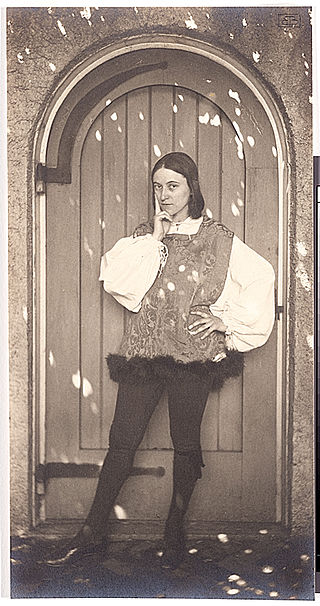
Edith Emerson was an American painter, muralist, illustrator, writer, and curator. She was the life partner of acclaimed muralist Violet Oakley and served as the vice-president, president, and curator of the Woodmere Art Museum in the Chestnut Hill neighborhood of Philadelphia, Pennsylvania, from 1940 to 1978.

The Museum of Asian Art is a museum located in Kuala Lumpur, Malaysia. The museum is dedicated to showcasing different art forms in various parts of the Asian continent.
















